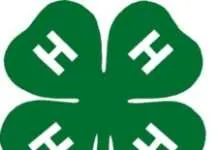Why a raised bed to grow vegetables? Poorly draining or compacted soils and physical limitations of the gardener are a few reasons you may not want an in-ground garden. Raised-bed gardening can be a great option, but it has both advantages and disadvantages.
Advantages
• Easier maintenance. The higher the bed, the less bending is needed. You can have more intensive plantings, which also means fewer weeds. Those weeds that do pop up are easily pulled.
• Improved soil quality and drainage. A well-designed raised bed holds a good quality mix of soil and compost, optimizing root growth and promoting drainage.
• Higher yields. Improved soil conditions allow for higher yields and for planting more intensively.
• Longer growing season. Soil warms more quickly in spring in a raised bed, and you can use low tunnels to extend the season even longer.
Disadvantages
• Expense. There is an initial outlay for creating a raised bed. This varies depending on material you use to construct the raised beds, such as wood, brick, etc.
• Increased watering in summer. Raised beds often dry out faster in summer (but drip irrigation or soaker hoses can help).
To build a raised bed, start with quality materials. Rot-resistant wood (including cedar and redwood) is a great choice, but it does cost more than alternatives like pine.
Both types will degrade over time, but rot-resistant wood lasts much longer. You can also use pressure-treated lumber that uses ACQ (alkaline copper quaternary). There should be a tag on the lumber telling you what it’s been treated with. Non-wood options include composite plastic lumber, bricks, and concrete blocks.
A bed accessible from both sides should be no wider than 4 feet; if it is only accessible from one side or is designed for wheelchair users, limit the width to 3 feet. The bed can be as long as you wish, but shorter beds are easier to navigate. Beds should be 6 to 12 inches deep at a minimum, and of course a deeper bed better accommodates root growth. Beds longer than 6 feet or deeper than 18 inches should be reinforced (with anchored stakes, cross-cables, or similar methods) to account for the weight of the soil and to prevent the sides from bowing out.
There are various choices for preparing the site for your raised bed, from tilling the soil underneath (after removing turf or existing vegetation) and tilling in some of the raised-bed mix to blur the differences in the native and added soil. An alternative is to spread newspaper on existing soil, build the bed, then add the soil mix. You may be able to buy a ready-made bed mix in bulk, or you can make your own by combining 50/50 top soil and compost or 60/30/10 top soil, compost, and soilless mix.
Almost anything you can grow in the ground you can grow in a raised bed, though sprawling vegetables, including squash and pumpkins, are still better suited to an in-ground garden. Any crop that needs a trellis or other support, like tomato, will still need that help in a raised bed.
Add compost to your raised garden in the fall to further improve the soil quality. Also, have your soil tested once every few years to check the pH and nutrient levels so that you can implement effective fertilization practices.





